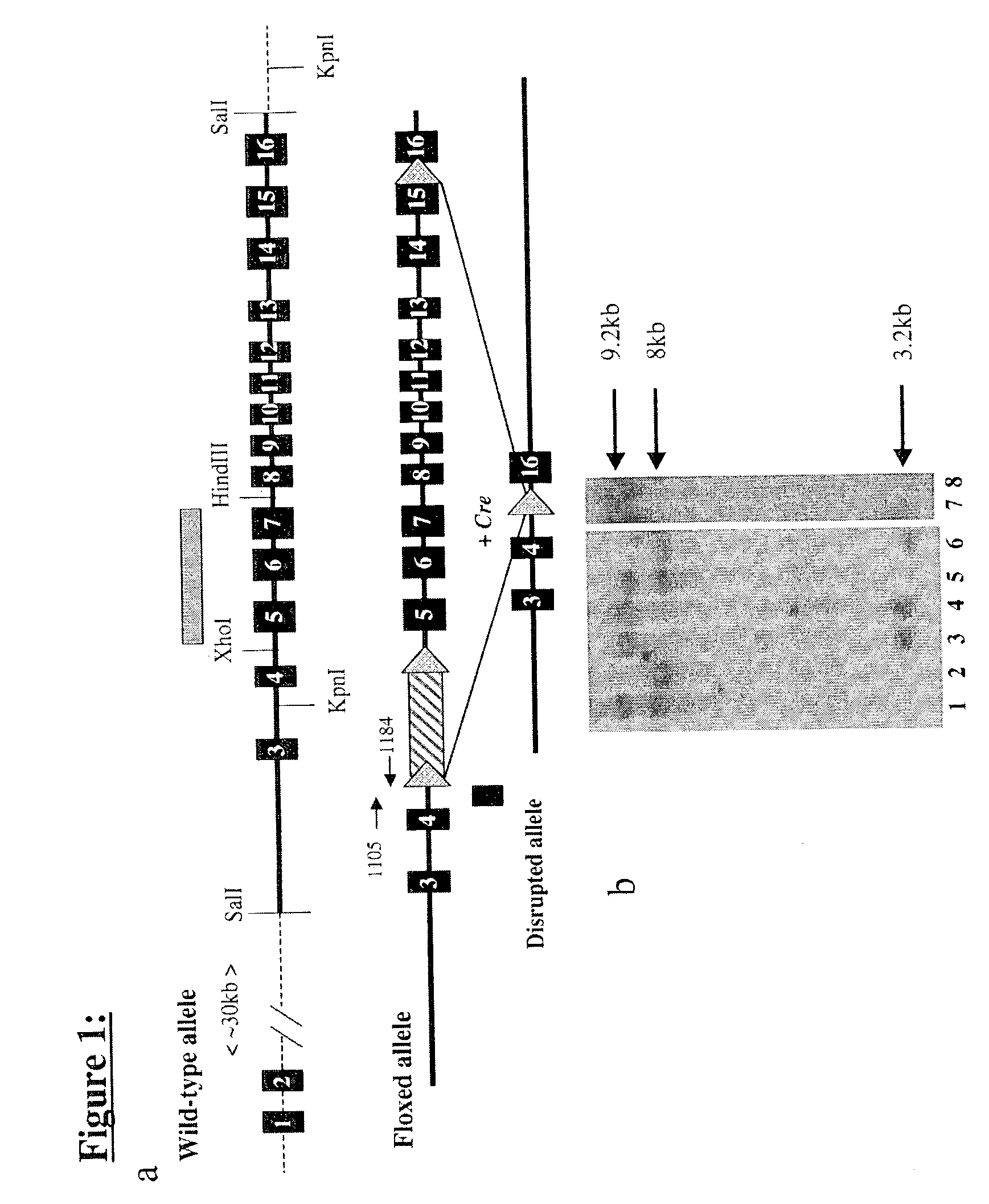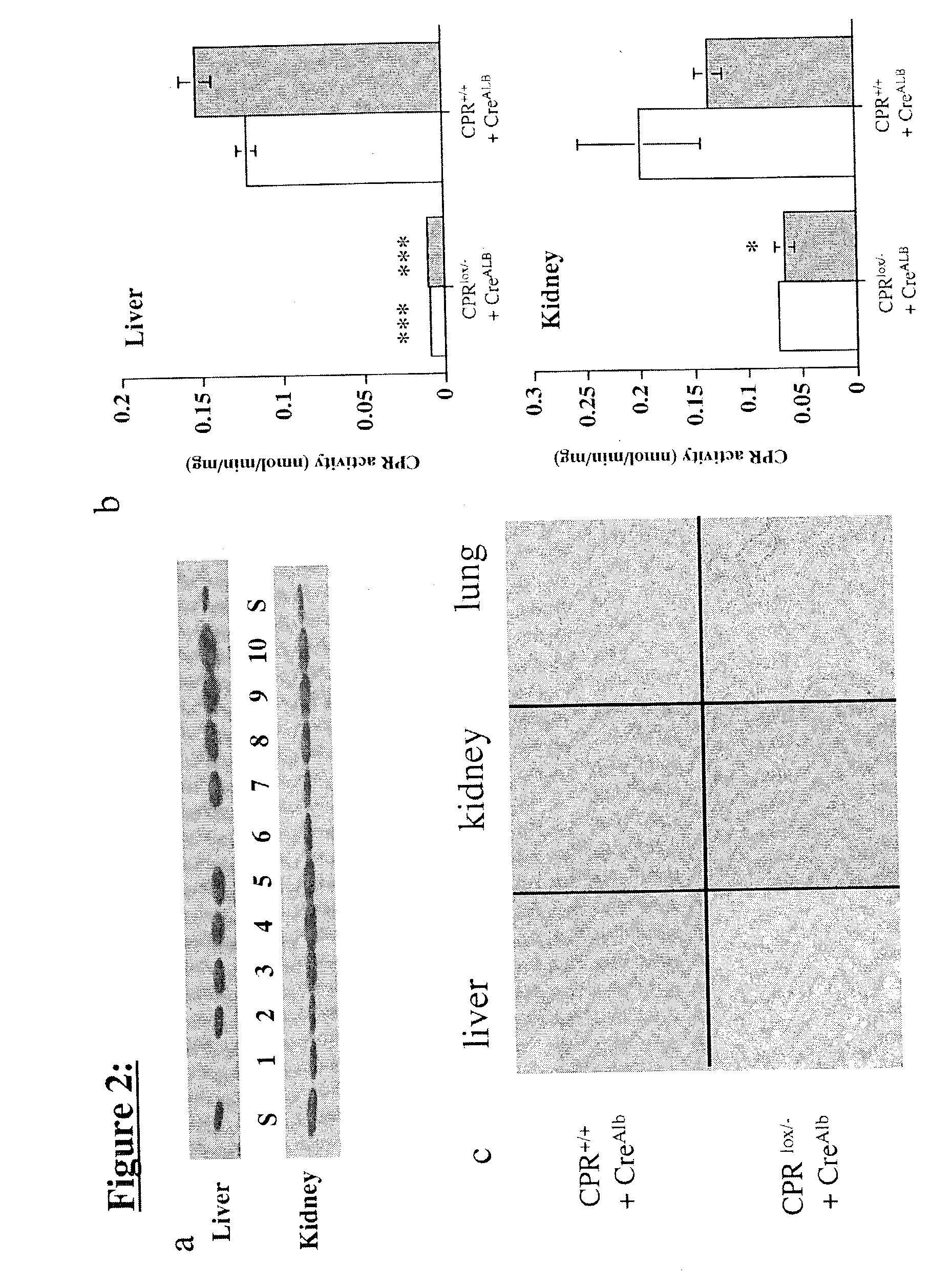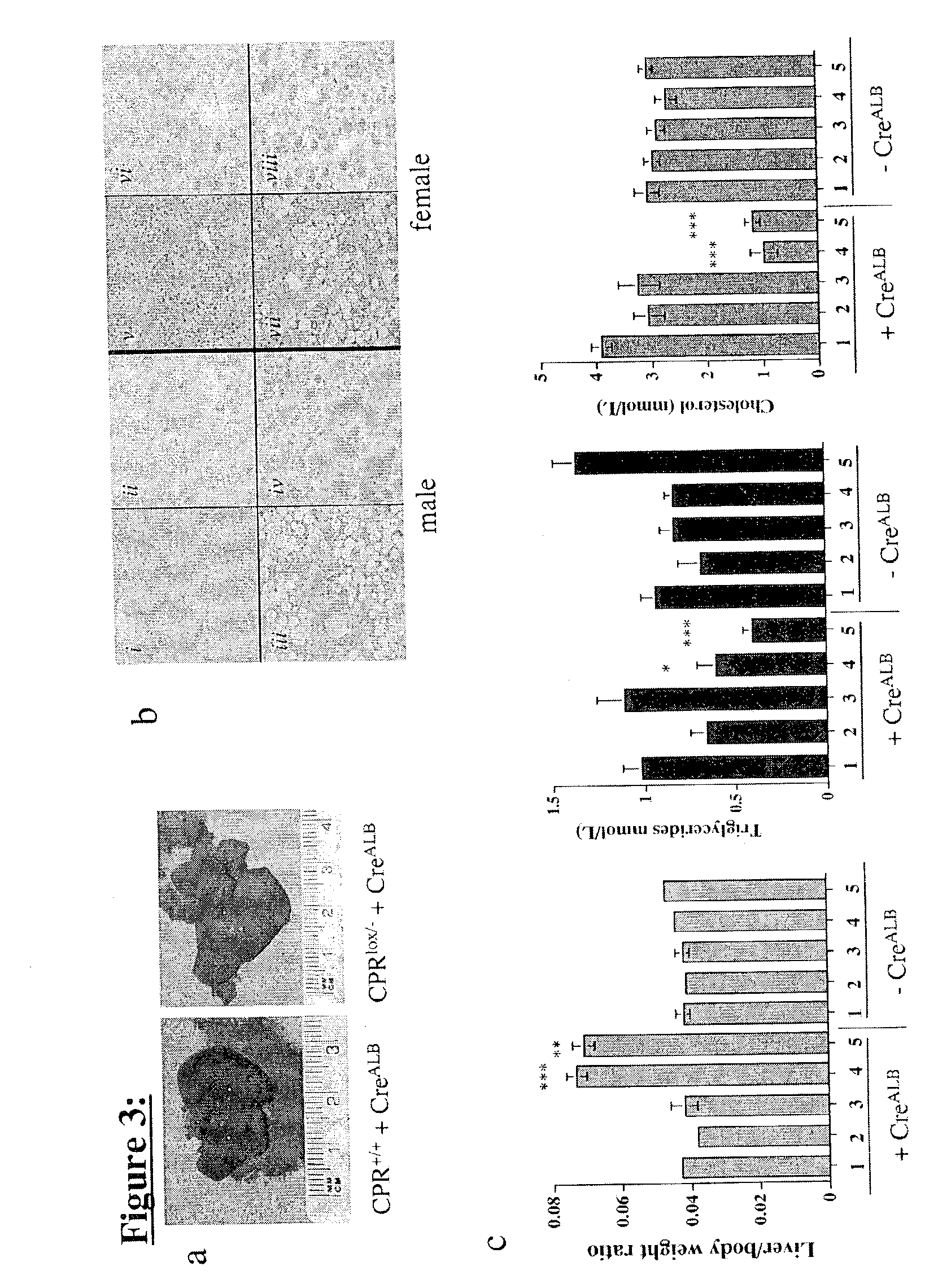Modulation of cytochrome P450 reductase activity
a technology of cytochrome p450 and cytochrome p450, which is applied in the field of modulation of cytochrome p450 reductase activity, can solve the problems of great difficulties in dissecting out the function(s) of individual hepatic p450s, and achieve the effect of less efficacy of test compounds
- Summary
- Abstract
- Description
- Claims
- Application Information
AI Technical Summary
Benefits of technology
Problems solved by technology
Method used
Image
Examples
example 2
[0155] Generation of Hepatic CPR Null Mice
[0156] In order to test the ability of Cre recombinase to inactivate the CPR allele, mice carrying CPR.sup.lox / - were injected with a modified adenovirus in which Cre expression is regulated by the cytomegalovirus (CMV) promotor. One week after a single intravenous injection of AdCrel, hepatic CPR expression was reduced by >95% as measured by immunoblotting of hepatic microsomes and immunostaining of liver sections (not shown).
[0157] Specific hepatic deletion of CPR was achieved by crossing CPR.sup.lox / lox mice into a line where Cre expression was regulated by the rat albumin promotor. Mice identified as CPR.sup.lox / ++Cre.sup.ALB were either backcrossed with CPR.sup.lox / lox mice to generate a CPR.sup.lox / lox+Cre.sup.ALB line, or crossed with CPR heterozygous nulls to generate CPR.sup.lox / -+Cre.sup.ALB mice. The presence of the Cre.sup.ALB transgene was determined by PCR (data not shown). Offspring born from either of these crosses were found...
example 3
[0159] Characterisation of Hepatic CPR Null Mice
[0160] Mice nulled for hepatic CPR exhibited no overt phenotypic differences to controls. The mice grew at the same rate as their wild-type counterparts and there was no change in survival rates or behaviour. In spite of the known activity of the hepatic P450 monooyxgenase system in the metabolism of androgens and oestrogens, CPR hepatic null mice exhibited normal fertility when mated to wild-type (CPR.sup.+ / + or CPR.sup.lox / lox) mice, indicating that hepatic hormone metabolism does not affect fertility.
[0161] More detailed analysis showed that both male and female hepatic CPR nulls displayed hepatomegaly, the liver being approximately 50% larger, in relation to body weight (7.5%), compared to wild-type mice (4%). Furthermore, the liver was pale in colour, and the tissue was mottled and friable (FIG. 3a,c). Microscopic examination revealed the presence of microvisicular and macrovisicular fatty changes, the former predominating (FIG. 3...
example 4
[0166] P450 Activity in Hepatic CPR Null Mice
[0167] In order to determine the effect of CPR deletion on hepatic P450 monoxygenase activities, we measured the microsomal hydroxylation of testosterone (FIG. 4a). When expressed as pmol metabolite per nmol P450, a 90% reduction in the formation of 6.alpha.-hydroxytestosterone, an activity associated with CYP3A proteins, was measured in both males and females, indicating that a lack of CPR in this tissue resulted in severely compromised P450 function. The 7phydroxylation of testosterone, carried out by P450s of the CYP2A subfamily, was decreased by >99% in both males and females, while 16p-hydroxylation was undetectable in hepatic CPR nulls of both sexes (FIG. 4a). In addition to the marked reduction in testosterone metabolism, the O-dealkylation of 7-methoxyresortifin was also almost completely ablated in CPR.sup.lox / -+Cre.sup.ALB mice, being reduced by 99.5% in males and 98.5% in females, when expressed nmol metabolite per nmol P450 (n...
PUM
| Property | Measurement | Unit |
|---|---|---|
| Digital information | aaaaa | aaaaa |
| Stress optical coefficient | aaaaa | aaaaa |
| Toxicity | aaaaa | aaaaa |
Abstract
Description
Claims
Application Information
 Login to View More
Login to View More - R&D
- Intellectual Property
- Life Sciences
- Materials
- Tech Scout
- Unparalleled Data Quality
- Higher Quality Content
- 60% Fewer Hallucinations
Browse by: Latest US Patents, China's latest patents, Technical Efficacy Thesaurus, Application Domain, Technology Topic, Popular Technical Reports.
© 2025 PatSnap. All rights reserved.Legal|Privacy policy|Modern Slavery Act Transparency Statement|Sitemap|About US| Contact US: help@patsnap.com



